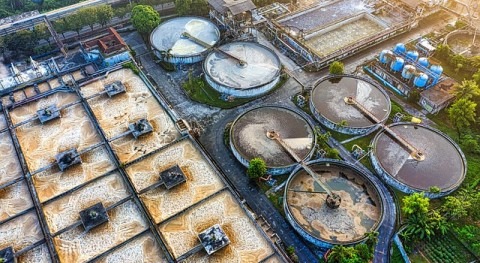How to plan a wastewater treatment plant for a city?

A waste water treatment plant (WWTP) is an essential facility designed to collect, treat, and ultimately discharge or reuse treated wastewater generated by a community. Proper planning and design of a WWTP is crucial for ensuring the health and safety of a city's inhabitants, as well as protecting the environment from water pollution. For a city, this involves taking into account several factors, including population density, projected growth, water usage, regulations, and available treatment technologies.
1 . Population Density and Projected Growth
When planning a WWTP, it is essential to consider the current population density and anticipated future growth of the city. Demographic data can be used to project potential increases in wastewater generation and to determine the appropriate capacity for the treatment plant. This helps to ensure that the plant can accommodate the city's needs for the foreseeable future.
2 . Water Usage
Estimating the average daily water usage of the city's residents is necessary for determining the amount of wastewater generated. This can be achieved by collecting data on domestic, commercial, and industrial water consumption. These estimates will influence the overall design of the WWTP, including the size and number of treatment units.
3 . Regulations
Wastewater treatment plants must comply with local, regional, and national regulations that dictate the acceptable levels of pollutants in treated wastewater. These regulations set limits on the concentrations of various contaminants such as nutrients, pathogens, and toxic substances. In order to meet these standards, the WWTP must be designed to effectively remove or reduce these pollutants through various treatment processes.
4 . Available Treatment Technologies
There are a variety of treatment technologies available for use in a WWTP, including physical, biological, and chemical processes. These methods can be used in combination to achieve the desired level of pollutant removal. The choice of technology depends on the specific characteristics of the wastewater, regulatory requirements, and budgetary constraints. Key treatment processes include preliminary treatment (screening and grit removal), primary treatment (sedimentation), secondary treatment (biological processes), and tertiary treatment (advanced processes, such as filtration and disinfection).
5 . Site Selection and Design
Selecting an appropriate site for the WWTP involves evaluating factors such as land availability, environmental impact, accessibility, and proximity to the wastewater collection system. The site should be large enough to accommodate the necessary treatment units and potential future expansion. The design of the WWTP should incorporate considerations for energy efficiency, odor control, and the integration of advanced treatment technologies as needed.
6 . Conclusion
Planning a waste water treatment plant for a city requires careful evaluation of multiple factors, such as population density, water usage, regulations, available treatment technologies, and site selection. By taking these aspects into account, a WWTP can be designed to effectively treat wastewater, protect public health, and preserve the environment.





